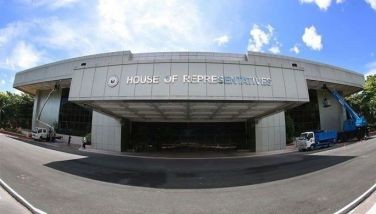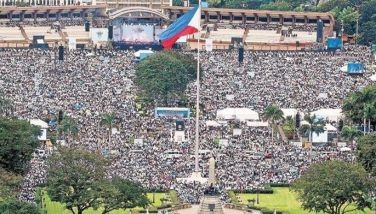Decongesting EDSA means lower air pollution
Manila, Philippines - EDSA (Epifanio de los Santos Avenue) has long been dreaded as a scourge of motorists and commuters because of the horrendous traffic congestion caused by thousands of motor vehicles that clog it daily and travel at a grindingly slow pace.
Vehicles using diesel fuel have been tagged by environmental experts as the biggest source of air pollution due to its toxic substance content that is hazardous to the environment and the people.
Among the toxic chemicals emitted by diesel-powered transport are carbon dioxide, methane, nitrous oxide, sulfur and benzene.
The present quality of diesel standard in the country — a sulfur content of 500 parts per million (PPM) — contributes to the harmful chemicals emitted to the environment. This is the main reason why countries like Japan, South Korea, Hong Kong, Singapore, Australia and Taiwan and key cities in China and India have adapted the use of lower sulfur diesel with 50 PPM or less.
The poor air quality in Metro Manila caused by motor vehicles has led Environment and Natural Resources Secretary Ramon Paje and other concerned government agencies like the Land Transportation Authority and Metro Manila Development Authority to initiate a move to decongest traffic in EDSA and ultimately reduce air pollution.
By limiting the number of vehicles plying EDSA, gas emissions will automatically go down, resulting in lower pollution levels, Paje explained.
He blamed slow-moving vehicles that travel at a snail’s pace as greatly responsible for air pollution in the metropolis.
With few vehicles and, therefore, less traffic on the road, motorists and commuters can negotiate the distance from Cubao, Quezon City to Makati City in 15 minutes, compared to the present travel time of 1-1/2 hour from one place to another due to EDSA’s chaotic traffic.
Paje pointed out that although a car’s engine is clean, the pollution load will remain high if it travels at a slow speed due to heavy traffic. The solution is to make the vehicle move faster.
According to the DENR chief, it would be ideal if the average vehicle speed on EDSA is 50 kilometers per hour (KPH), compared to the usual 10 KPH on a normal day.
A 2009 study by the MMDA reported that the average speed of vehicles on EDSA was 36 KPH, while the volume of vehicles rose from 272,389 in 2008 to 316,345 in 2009.
Statistics have also shown that Metro Manila ranks high among urban centers exposed to the type of air pollution dubbed particulate matter, which consists of complex and varying mixture of particles in the air.
Another proposal of Paje to decongest EDSA is the removal of bus terminals in major thoroughfares and their relocation to the northern and southern parts of Metro Manila.
He also supported the idea that only motorists with adequate parking spaces in their residences should be allowed to register their vehicles in order to limit the number of car-owners who use the sidewalks to park, since their indiscriminate use of city and national roads as parking slots impede the flow of traffic that result in the build up of choke points.
- Latest




























